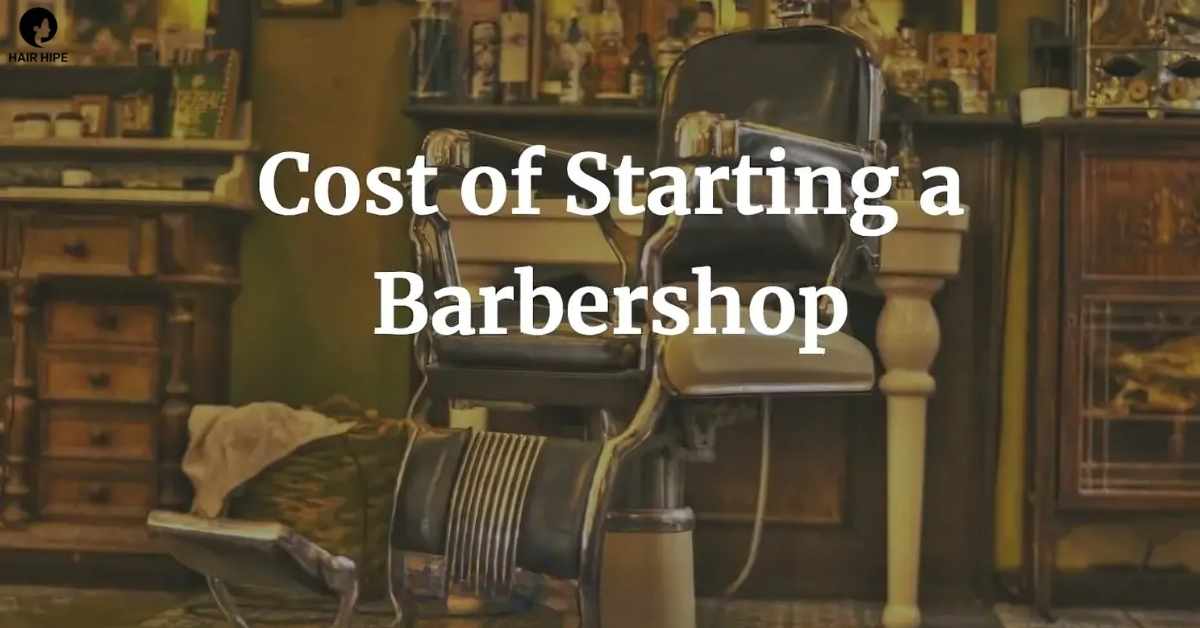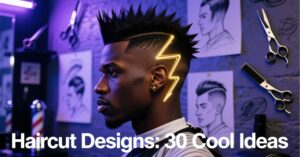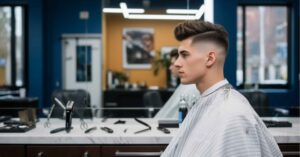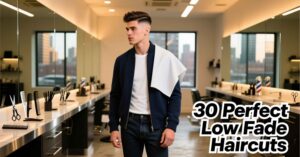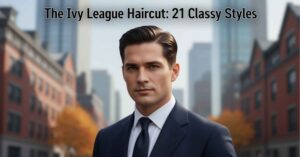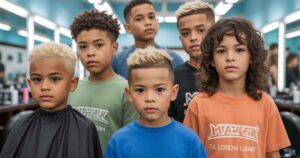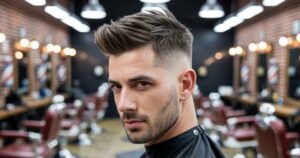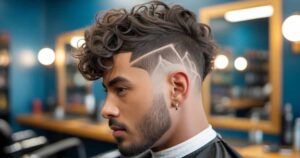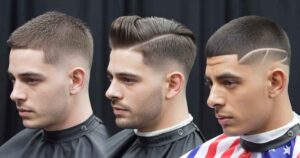Starting your own barbershop feels exciting until you see the bills. Most new owners get shocked by hidden expenses they never planned for. But here’s the truth: successful barbershop owners invest smartly from day one.
You’re about to discover exactly what it costs to open a barber shop in America today. We’ll break down every expense, share real numbers from actual shop owners, and show you how to avoid costly mistakes that sink 40% of new barbershops within two years.
Ready? Let’s cut through the confusion.
Average Cost to Open a Barber Shop in the USA
Opening a barbershop isn’t cheap. Your startup budget for barbershop ventures ranges dramatically based on location, size, and ambition level.
Here’s what you’re really looking at:
National Cost Range & Breakdown
The average barber shop cost USA varies significantly, but here’s the realistic breakdown:
| Investment Level | Cost Range | What You Get |
| Budget Setup | $15,000 – $25,000 | 2 basic chairs, minimal renovation, essential tools |
| Standard Shop | $40,000 – $75,000 | 3-4 professional chairs, moderate buildout, quality equipment |
| Premium Experience | $100,000 – $200,000+ | Custom design, luxury chairs, prime location |
Where does your money actually go? Industry data shows this typical barber shop expenses breakdown:
- Equipment & Chairs: 35-40%
- Renovation & Design: 25-30%
- Initial Inventory: 8-12%
- Licenses & Permits: 3-5%
- Marketing & Signage: 5-8%
- Working Capital: 15-20%
Most successful owners budget $50,000-$80,000 for a solid mid-range barbershop that attracts steady clientele without breaking the bank.
Cost Comparison: Urban vs. Rural Shops
Location drives your barber shop startup costs more than any other factor.
Urban Barbershop Costs:
- Rent: $3,000-$8,000+ monthly
- Renovation: Higher due to building codes
- Licensing: More complex permit requirements
- Labor: Premium wages for skilled barbers
- Total Investment: Typically 40-60% higher than rural
Rural Barbershop Advantages:
- Rent: $800-$2,500 monthly
- Community Loyalty: Stronger customer relationships
- Lower Competition: Fewer established shops
- Renovation Flexibility: Simpler building requirements
Consider local foot traffic considerations carefully. Urban locations offer higher volume but rural shops often enjoy better profit margins due to lower overhead.
Key Factors That Influence Barbershop Startup Costs
Five critical decisions determine whether you’ll spend $20,000 or $200,000. Make them wisely.
Location and City-Specific Costs
Your barber shop rent cost varies wildly by geography. Here’s what owners actually pay:
Major Metropolitan Areas:
- New York City: $4,000-$12,000 monthly
- Los Angeles: $3,500-$9,000 monthly
- Chicago: $2,500-$6,500 monthly
- Miami: $2,200-$5,800 monthly
Mid-Size Cities:
- Nashville: $1,800-$4,200 monthly
- Austin: $2,000-$4,800 monthly
- Denver: $1,900-$4,500 monthly
Don’t forget the lease deposit for barbershop rentals—expect 2-6 months upfront plus security deposits.
Hidden location costs include:
- Parking availability (affects customer retention by 25%)
- Foot traffic patterns (morning vs. evening peaks)
- Nearby businesses (complement or compete?)
- Future development plans (construction disrupts business)
Type of Barber Shop (Traditional, Modern, Mobile)
Your shop style dramatically impacts investment requirements.
Traditional Barbershop:
- Investment: $25,000-$45,000
- Focus: Classic cuts, hot towel shaves
- Equipment: Basic chairs, vintage décor
- Target: Neighborhood regulars
Modern Hybrid Salon:
- Investment: $55,000-$95,000
- Focus: Contemporary cuts, styling services
- Equipment: High-tech chairs, advanced tools
- Target: Style-conscious clients
Mobile Barber Services:
- Investment: $15,000-$35,000
- Focus: Convenience, house calls
- Equipment: Portable chairs, vehicle modifications
- Target: Busy professionals, elderly clients
Mobile barbering requires different licensing in many states—research your barber license requirements per state thoroughly.
Lease or Buy: Choosing the Right Space
Most barbershop owners lease initially. Here’s why:
Leasing Advantages:
- Lower upfront investment
- Landlord handles major repairs
- Easier to relocate if location fails
- Lease deposit for barbershop: Typically 2-4 months rent
Buying Considerations:
- Builds equity over time
- Complete control over modifications
- Higher initial investment
- Property maintenance responsibility
Ideal barbershop floor plan size: 800-1,200 sq ft for 3-4 chairs. Smaller spaces (200-600 sq ft) work for 1-2 chair operations.
Licensing, Permits, and State Regulations
Barber shop license cost varies significantly by state:
| State | License Fee | Permit Costs | Annual Renewal |
| California | $75-$125 | $200-$500 | $50-$75 |
| Texas | $50-$100 | $150-$400 | $40-$65 |
| Florida | $65-$110 | $175-$450 | $45-$70 |
| New York | $100-$150 | $300-$600 | $75-$100 |
Required permits typically include:
- Business license: $25-$100
- Resale permit: $0-$50
- Health department permit: $50-$200
- Fire department clearance: $25-$75
- Signage permits: $50-$300
Business registration for barbershop operations also requires:
- EIN (Federal Tax ID)
- State tax registration
- Workers’ compensation setup
- Unemployment insurance registration
Insurance and Compliance Costs
Barber shop insurance coverage protects your investment:
Essential Coverage Types:
- General Liability: $300-$800 annually
- Professional Liability: $200-$600 annually
- Property Insurance: $500-$1,500 annually
- Workers’ Compensation: 2-4% of payroll
Compliance costs include:
- OSHA safety training
- Health code certifications
- Continuing education requirements
- Regular inspections and fees
Budget $1,200-$3,000 annually for comprehensive insurance coverage.
Major Expenses When Opening a Barber Shop
Eight expense categories account for 95% of your startup investment. Let’s break down each one.
Renovation, Interior Design, and Furniture
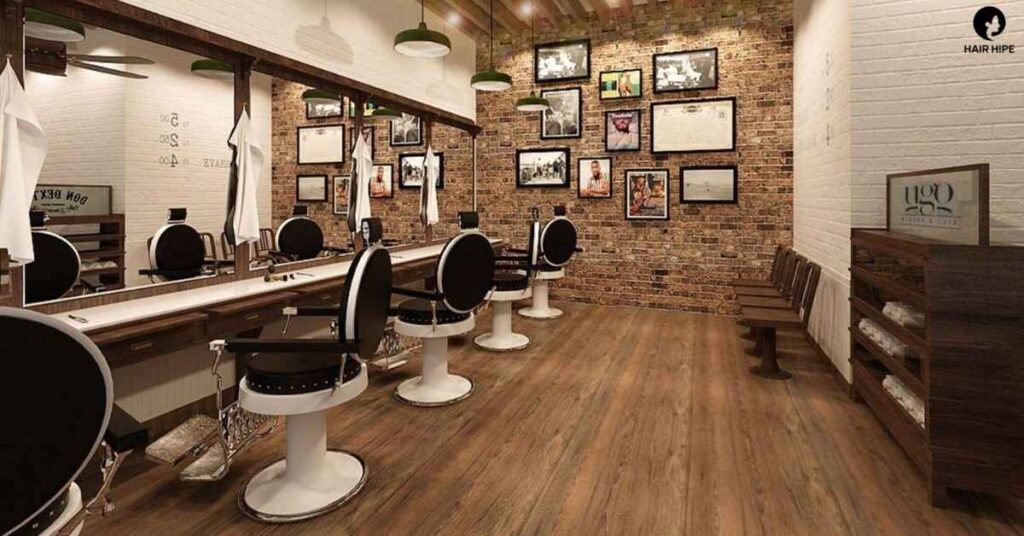
Barbershop renovation cost depends heavily on your space’s current condition.
Essential Renovation Elements:
Electrical Work: $3,000-$8,000
- Multiple outlets per station
- Proper lighting circuits
- 220V for equipment
- Emergency lighting systems
Plumbing Modifications: $2,000-$5,000
- Shampoo sink installations
- Hot water access
- Drainage improvements
- Water pressure upgrades
Interior Design Elements:
- Flooring: $1,500-$4,500 (vinyl, tile, or hardwood)
- Wall treatments: $800-$2,200 (paint, panels, brick)
- Ceiling work: $500-$1,800 (drop ceiling, lighting)
- Reception area: $1,200-$3,500 (desk, seating, décor)
Barbershop interior design cost for professional services: $2,000-$8,000.
Money-saving tip: Many barbershop renovation ideas can be DIY projects. Paint, simple décor, and basic furniture assembly save thousands.
Professional Barber Chairs & Equipment Costs
Barber chair prices represent your biggest single equipment expense.
Chair Investment Breakdown:
| Chair Type | Price Range | Features | Best For |
| Basic Hydraulic | $800-$1,200 | Height adjustment, basic comfort | Budget startups |
| Mid-Range Professional | $1,500-$2,500 | Reclining, leather, durability | Standard shops |
| Premium Vintage Style | $2,800-$4,500 | Classic design, premium materials | High-end establishments |
| Luxury Modern | $3,500-$6,000+ | Advanced features, custom options | Premium shops |
Complete workstation setup per chair:
- Professional chair: $1,500-$3,500
- Station mirror: $150-$400
- Work surface/counter: $200-$500
- Storage cabinet: $150-$350
- Lighting per station: $100-$300
Essential equipment beyond chairs:
- Shampoo sink: $400-$1,200
- Reception desk: $300-$800
- Waiting area seating: $500-$1,500
- POS system for barber shop: $500-$2,000
Salon equipment suppliers offer package deals. Compare prices from:
- Sally Beauty Supply
- Barber Depot
- Collins Manufacturing
- Takara Belmont
Tools, Clippers, and Supplies
Professional barber shop tools and supplies cost includes:
Essential Tools Per Barber:
- Professional clippers: $150-$400 (Wahl, Andis, Oster)
- Trimmers: $80-$200
- Scissors set: $100-$300 (cutting, thinning, texturing)
- Razors: $50-$150
- Combs and brushes: $30-$80
Initial Product Inventory: $800-$2,000
- Shampoos and conditioners
- Styling products (pomades, gels, waxes)
- After-shave and cologne
- Hair treatments
Sterilization Equipment: $300-$800
- UV sanitizers
- Barbicide solution
- Towel warmers
- Cleaning supplies
Budget $1,500-$3,000 per barber for complete tool setups.
Branding, Advertising, and Marketing Budget
Barber shop marketing costs start before you open.
Brand Development: $500-$2,500
- Logo design
- Color scheme
- Business cards
- Uniform design
Signage Investment: $800-$3,500
- Storefront signs
- Window graphics
- Interior branding
- Cost of signage and banners varies by size and complexity
Digital Presence: $300-$1,200
- Website development
- Google Business Profile setup
- Social media accounts
- Online booking system
Grand Opening Budget: $500-$2,000
- Grand opening promotions barber shop events
- Local advertising
- Promotional materials
- Free service offers
Digital marketing for barbershop operations includes:
- Barbershop social media advertising: $200-$500 monthly
- Google Ads: $300-$800 monthly
- Local directory listings
- Review management tools
Payroll, Staff Training, and Benefits
Barber shop payroll expenses start immediately.
Staffing Options:
- Employee Barbers: $15-$25 hourly plus benefits
- Independent Contractors: Chair rental $200-$400 weekly
- Commission-Based: 40-60% of service revenue
Hiring barbers vs renting chairs considerations:
| Option | Pros | Cons |
| Employee Model | Control over service, consistent quality | Higher overhead, payroll taxes |
| Chair Rental | Lower risk, immediate income | Less control, barber may leave |
Training Costs: $500-$2,000
- New employee orientation
- Product knowledge training
- Customer service standards
- Safety and sanitation protocols
Benefits Package (if offering):
- Health insurance contributions: $200-$500 monthly per employee
- Paid time off
- Professional development
- Performance bonuses
Professional Services (Legal, Accounting, Consultants)
Professional guidance saves money long-term.
Legal Services: $800-$2,500
- Business formation (LLC, Corp)
- Contract templates
- Lease review
- Employment law compliance
Accounting Setup: $300-$1,200
- Bookkeeping system setup
- Tax structure planning
- Payroll system configuration
- Financial reporting templates
Industry Consultants: $1,000-$5,000
- Barber shop business plan development
- Location analysis
- Financial projections
- Operational procedures
Ongoing Professional Costs:
- Monthly bookkeeping: $150-$400
- Tax preparation: $300-$800 annually
- Legal consultation: $150-$300 hourly
Franchise Fees (If Buying Into a Brand)
Barbershop franchise opportunities offer proven systems but cost more upfront.
Popular Franchise Options:
| Franchise | Initial Fee | Total Investment | Royalty |
| Sport Clips | $59,500 | $189,000-$355,000 | 6% |
| Great Clips | $22,500 | $136,000-$258,000 | 6% |
| Supercuts | $22,500 | $144,000-$294,000 | 6% |
| Floyd’s 99 | $45,000 | $175,000-$350,000 | 6% |
Franchise advantages:
- Proven business model
- Training and support
- Marketing assistance
- Bulk purchasing power
Franchise disadvantages:
- Higher barber shop franchise cost
- Ongoing royalty payments
- Limited creative control
- Territorial restrictions
Smart Cost-Saving Tips for Aspiring Barbershop Owners
Strategic decisions slash startup costs without compromising quality.
Start Small: Fewer Chairs and Workstations
Beginning with 2-3 chairs instead of 4-6 reduces initial investment by 30-40%.
Two-Chair Shop Benefits:
- Lower rent requirements (400-600 sq ft)
- Reduced equipment costs
- Easier management
- Faster break-even point
Expansion Strategy:
- Design space for future growth
- Choose scalable equipment
- Plan electrical for additional chairs
- Monitor customer demand patterns
Revenue per chair in successful shops: $3,000-$5,000 monthly. Start small, grow smart.
Choose an Affordable but Visible Location
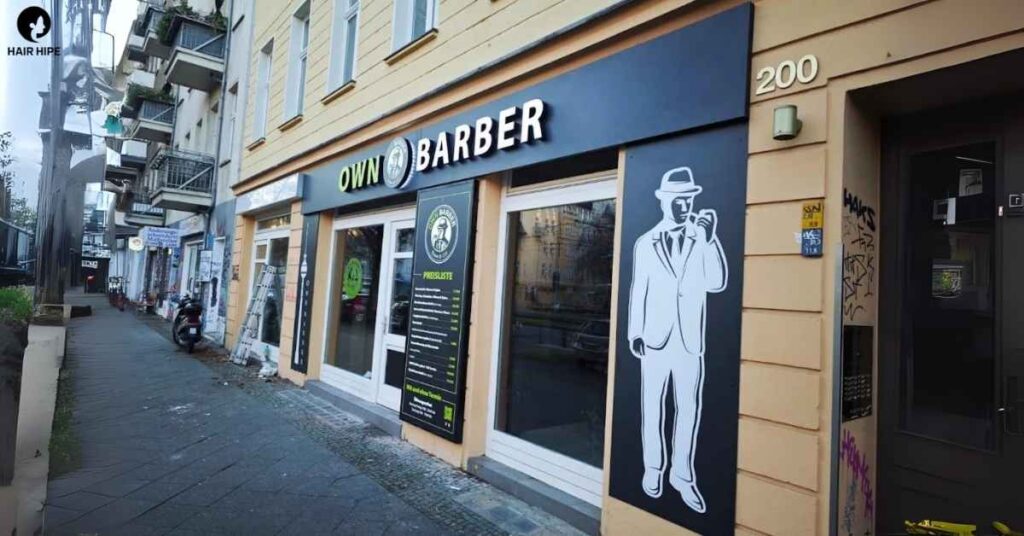
Location strategy balances cost with visibility.
Secondary Commercial Districts:
- 20-40% lower rent than prime locations
- Adequate parking availability
- Growing neighborhoods
- Less competition
Strip Mall Advantages:
- Established foot traffic
- Shared marketing costs
- Parking included
- Lower lease deposits
Location Research Tips:
- Count pedestrians during peak hours
- Check competitor pricing and services
- Analyze demographic data
- Consider future development plans
Save on Renovations with DIY Design
DIY-friendly projects include:
- Interior painting: Save $1,500-$3,000
- Basic flooring installation: Save $800-$2,000
- Simple décor and fixtures: Save $500-$1,500
- Furniture assembly: Save $200-$600
Professional-Only Work:
- Electrical modifications
- Plumbing installations
- Structural changes
- Fire safety systems
Always check permit requirements. Some areas require licensed contractors for specific work.
Build Your Client Base Before the Grand Opening
Pre-opening marketing generates immediate revenue:
Social Media Strategy:
- Share renovation progress
- Introduce your team
- Offer pre-opening specials
- Build anticipation
Community Engagement:
- Partner with local businesses
- Sponsor community events
- Offer charity services
- Network with other professionals
Soft Opening Benefits:
- Test systems with limited customers
- Train staff in real conditions
- Generate word-of-mouth buzz
- Collect initial reviews
Consider Chair Rental for Extra Income
Chair rental model provides immediate cash flow:
Rental Rates by Market:
- Urban areas: $250-$500 weekly
- Suburban: $200-$350 weekly
- Rural: $150-$250 weekly
Rental Agreement Essentials:
- Clear payment terms
- Responsibilities for supplies
- Schedule coordination
- Termination clauses
Legal Considerations:
- Independent contractor status
- Insurance requirements
- Tax implications
- Compliance with labor laws
Use Social Media to Grow Your Shop
Low-cost marketing through social platforms:
Instagram Success Tips:
- Before/after transformation photos
- Behind-the-scenes content
- Customer testimonials
- Barber personality showcases
TikTok Engagement:
- Quick cutting videos
- Transformation reveals
- Educational content
- Trending audio usage
Facebook Local Marketing:
- Community group participation
- Event announcements
- Customer reviews
- Local business partnerships
Content Creation Costs: $0-$300 monthly (mostly time investment)
Profitability and ROI of a Barber Shop Business
Understanding revenue potential justifies your initial investment.
Average Monthly Revenue of a Small Barber Shop
Revenue expectations vary by location and service mix:
Small Shop (2-3 chairs):
- Monthly revenue: $8,000-$18,000
- Services per day: 20-40 cuts
- Average service price: $15-$35
Mid-size Shop (4-6 chairs):
- Monthly revenue: $20,000-$45,000
- Services per day: 50-80 cuts
- Average service price: $18-$40
Barber shop profit margins typically range:
- Gross margin: 60-75%
- Net profit margin: 8-15%
- Owner operator: 15-25%
Revenue streams beyond haircuts:
- Product sales (20-30% markup)
- Hot towel shaves (+$10-$15)
- Beard trimming (+$5-$10)
- Hair washing (+$3-$8)
How Long Until You Break Even?
Typical break-even timeline: 12-24 months
Factors affecting profitability:
Accelerating Factors:
- Prime location with heavy foot traffic
- Experienced, skilled barbers
- Strong social media presence
- Competitive pricing strategy
- Excellent customer service
Delay Factors:
- Poor location choice
- Inexperienced staff
- Inadequate marketing
- Overpriced services
- Operational inefficiencies
Barber shop profitability strategies:
- Focus on customer retention (costs 5x less than new customers)
- Upsell additional services
- Retail product sales
- Implement loyalty programs
- Optimize scheduling for peak times
Warning signs of financial trouble:
- Consistent monthly losses after 8-10 months
- Declining customer count
- Cash flow problems
- Unable to pay suppliers
- High staff turnover
Monthly expense tracking essentials:
- Barber shop monthly expenses average $12,000-$25,000
- Rent: 15-25% of revenue
- Payroll: 40-55% of revenue
- Supplies: 8-12% of revenue
- Utilities: 3-5% of revenue
- Marketing: 3-7% of revenue
Conclusion
Ready to open your barbershop? Use this guide’s cost breakdowns to create your detailed budget. Research local markets, visit successful shops, and consult industry professionals. Remember proper planning prevents costly mistakes. With realistic expectations and smart investments, your barbershop can become a profitable community cornerstone. Start planning today, and turn your entrepreneurial dreams into reality.

Mubeen, the expert writer behind Hair Hipe, brings over 5 years of experience in men’s hair cutting. Passionate about modern styles and precision grooming, he shares tips, trends, and techniques to elevate every haircut.
